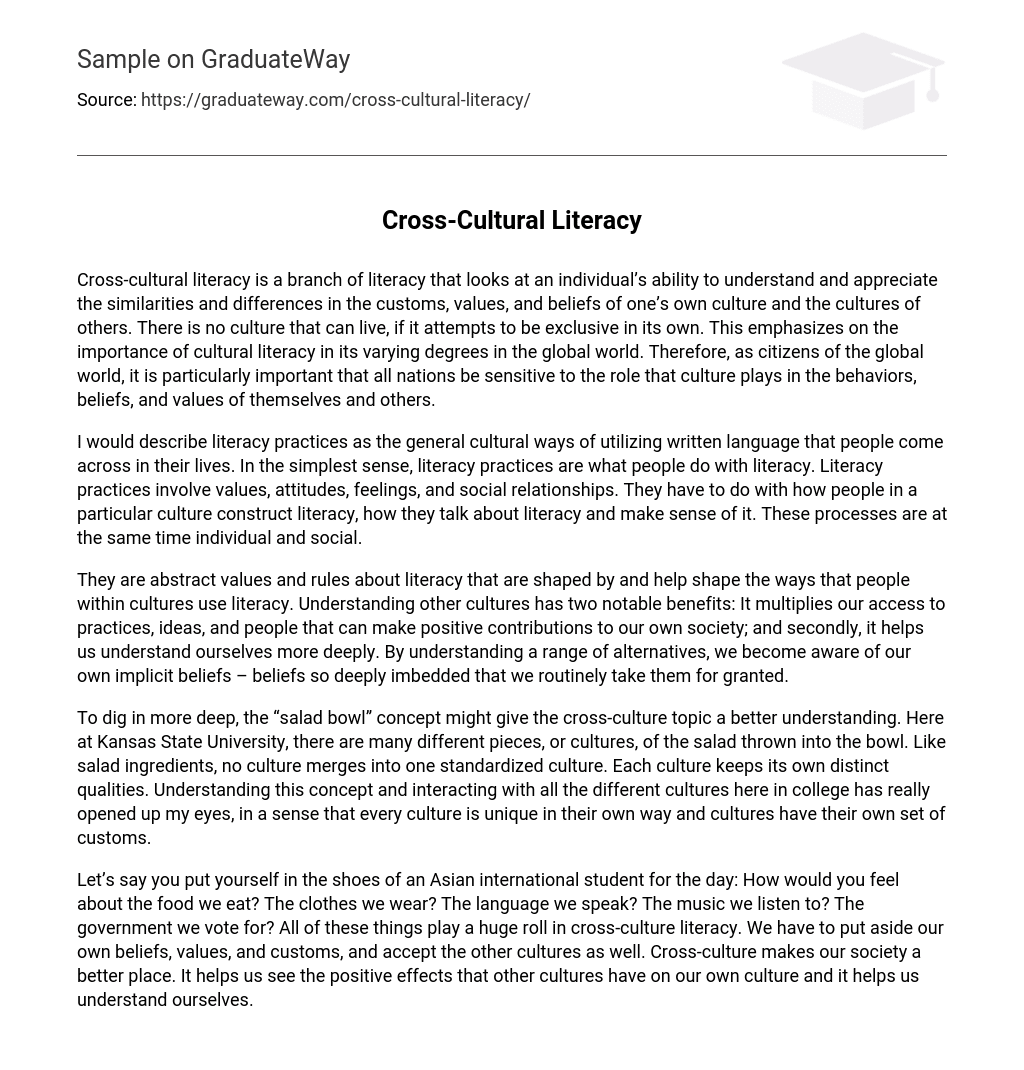Cross-cultural literacy is a branch of literacy that looks at an individual’s ability to understand and appreciate the similarities and differences in the customs, values, and beliefs of one’s own culture and the cultures of others. There is no culture that can live, if it attempts to be exclusive in its own. This emphasizes on the importance of cultural literacy in its varying degrees in the global world. Therefore, as citizens of the global world, it is particularly important that all nations be sensitive to the role that culture plays in the behaviors, beliefs, and values of themselves and others.
I would describe literacy practices as the general cultural ways of utilizing written language that people come across in their lives. In the simplest sense, literacy practices are what people do with literacy. Literacy practices involve values, attitudes, feelings, and social relationships. They have to do with how people in a particular culture construct literacy, how they talk about literacy and make sense of it. These processes are at the same time individual and social.
They are abstract values and rules about literacy that are shaped by and help shape the ways that people within cultures use literacy. Understanding other cultures has two notable benefits: It multiplies our access to practices, ideas, and people that can make positive contributions to our own society; and secondly, it helps us understand ourselves more deeply. By understanding a range of alternatives, we become aware of our own implicit beliefs – beliefs so deeply imbedded that we routinely take them for granted.
To dig in more deep, the “salad bowl” concept might give the cross-culture topic a better understanding. Here at Kansas State University, there are many different pieces, or cultures, of the salad thrown into the bowl. Like salad ingredients, no culture merges into one standardized culture. Each culture keeps its own distinct qualities. Understanding this concept and interacting with all the different cultures here in college has really opened up my eyes, in a sense that every culture is unique in their own way and cultures have their own set of customs.
Let’s say you put yourself in the shoes of an Asian international student for the day: How would you feel about the food we eat? The clothes we wear? The language we speak? The music we listen to? The government we vote for? All of these things play a huge roll in cross-culture literacy. We have to put aside our own beliefs, values, and customs, and accept the other cultures as well. Cross-culture makes our society a better place. It helps us see the positive effects that other cultures have on our own culture and it helps us understand ourselves.





